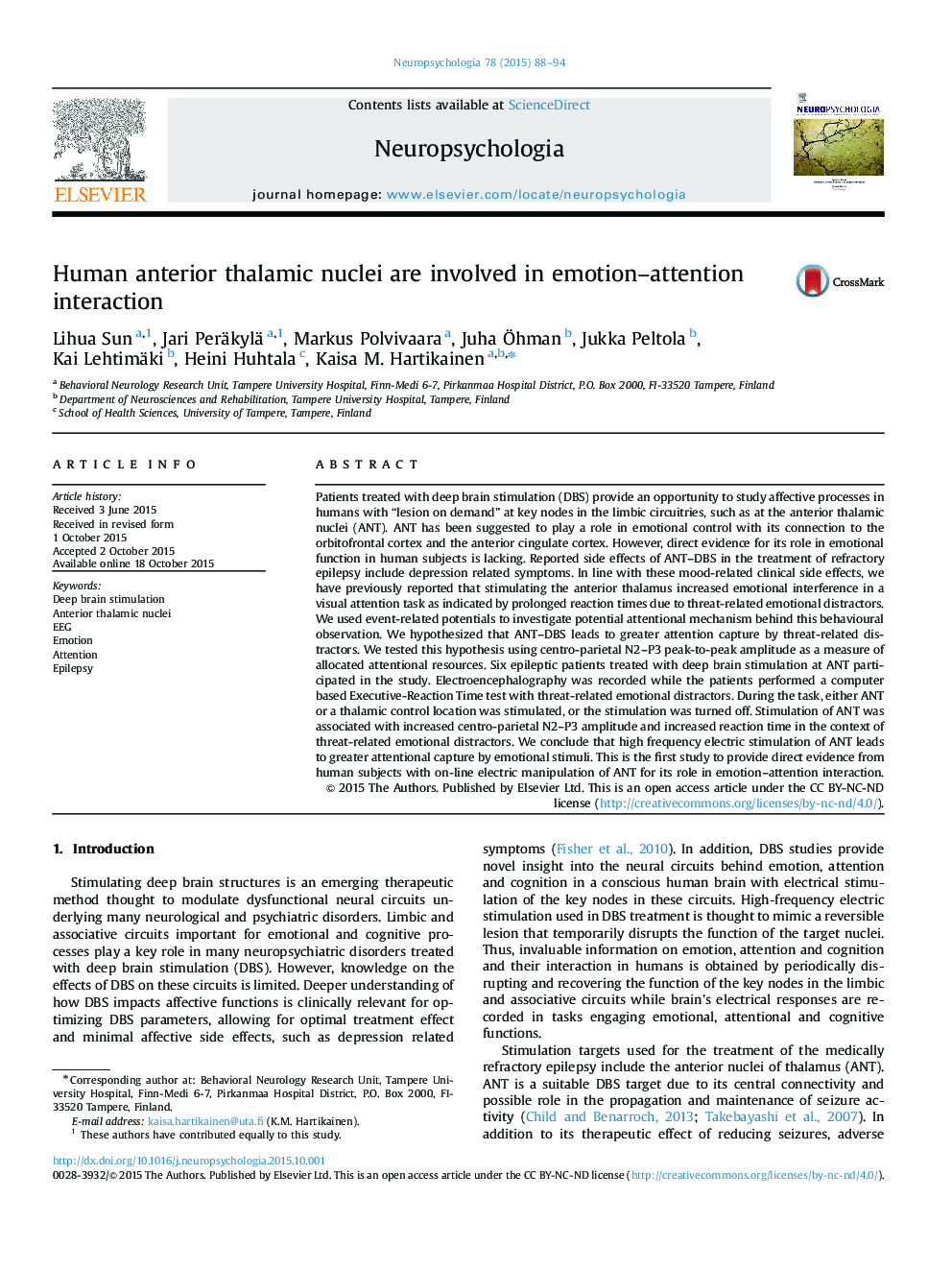| Article ID | Journal | Published Year | Pages | File Type |
|---|---|---|---|---|
| 7319560 | Neuropsychologia | 2015 | 7 Pages |
Abstract
Patients treated with deep brain stimulation (DBS) provide an opportunity to study affective processes in humans with “lesion on demand” at key nodes in the limbic circuitries, such as at the anterior thalamic nuclei (ANT). ANT has been suggested to play a role in emotional control with its connection to the orbitofrontal cortex and the anterior cingulate cortex. However, direct evidence for its role in emotional function in human subjects is lacking. Reported side effects of ANT-DBS in the treatment of refractory epilepsy include depression related symptoms. In line with these mood-related clinical side effects, we have previously reported that stimulating the anterior thalamus increased emotional interference in a visual attention task as indicated by prolonged reaction times due to threat-related emotional distractors. We used event-related potentials to investigate potential attentional mechanism behind this behavioural observation. We hypothesized that ANT-DBS leads to greater attention capture by threat-related distractors. We tested this hypothesis using centro-parietal N2-P3 peak-to-peak amplitude as a measure of allocated attentional resources. Six epileptic patients treated with deep brain stimulation at ANT participated in the study. Electroencephalography was recorded while the patients performed a computer based Executive-Reaction Time test with threat-related emotional distractors. During the task, either ANT or a thalamic control location was stimulated, or the stimulation was turned off. Stimulation of ANT was associated with increased centro-parietal N2-P3 amplitude and increased reaction time in the context of threat-related emotional distractors. We conclude that high frequency electric stimulation of ANT leads to greater attentional capture by emotional stimuli. This is the first study to provide direct evidence from human subjects with on-line electric manipulation of ANT for its role in emotion-attention interaction.
Related Topics
Life Sciences
Neuroscience
Behavioral Neuroscience
Authors
Lihua Sun, Jari Peräkylä, Markus Polvivaara, Juha Ãhman, Jukka Peltola, Kai Lehtimäki, Heini Huhtala, Kaisa M. Hartikainen,
